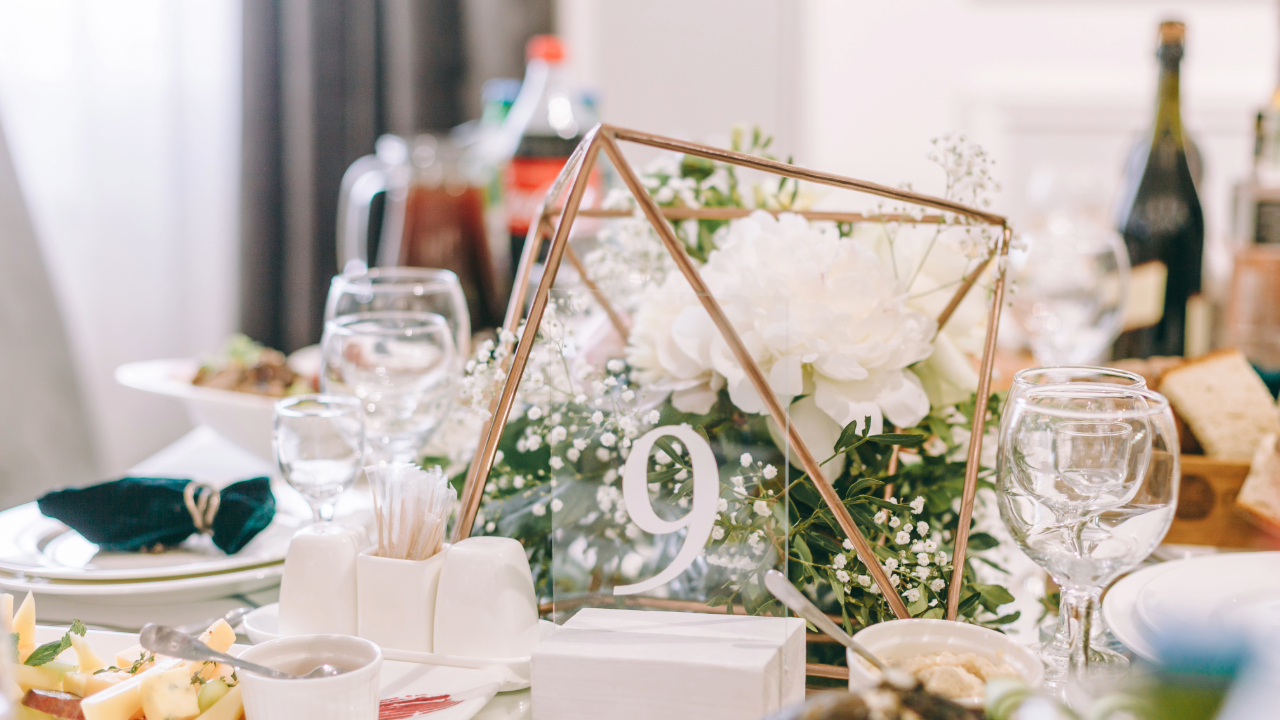Planning a wedding can sometimes feel like you’re trying to solve a particularly tricky puzzle, and figuring out the seating chart is often one of the most complex pieces. We’ve all been there – staring at a list of guests, trying to ensure everyone has a great time and, let’s be honest, making sure Aunt Mary isn’t seated next to Uncle Bob for obvious reasons. This guide is here to help you through this maze, especially if you’re tying the knot in Europe. From the basics of seating etiquette to clever tricks and digital hacks, we’re covering all you need to know to make your wedding seating plan a breeze, not a headache. Let’s dive in and make this task a piece of (wedding) cake!
▶️ Read also: Managing guest lists for a destination wedding in Europe
Key considerations for your wedding seating chart
When it comes to arranging your wedding seating, there are several key factors to keep in mind. These considerations are crucial to ensure that your guests have a comfortable and enjoyable experience. Let’s break down what you should focus on:
- Guest comfort: This is paramount. You want your guests to enjoy the celebration, and much of their comfort depends on who they are seated with. Consider grouping guests by common interests or relationships. For instance, seating family members together, or grouping friends who know each other well can create a comfortable and enjoyable atmosphere for everyone.
- Space management: The layout of your venue plays a significant role in how you arrange your seating. Be mindful of the space available and try to arrange tables in a way that optimizes the use of space without making any area feel overcrowded. This includes considering the flow of traffic, ensuring there’s enough room for guests to move around comfortably, and that each table has good visibility of the key areas like the dance floor or the head table.
- Special considerations: Always keep in mind any special needs your guests might have. This includes accessibility requirements for elderly or disabled guests, dietary restrictions, or even potential language barriers. For example, you might want to seat older guests away from the speakers to make the environment more comfortable for them, or ensure that guests who might not speak the local language are seated with someone who can help them feel included.
- Avoiding conflict: Be aware of any potential conflicts or tensions between guests and plan your seating chart accordingly. It’s essential to navigate through these personal dynamics carefully to avoid any discomfort or awkward situations during your special day. This might mean keeping certain family members or friends at different tables.
- Children’s seating: If children are attending, consider having a separate kids’ table if they are old enough. This can be a fun area for them, equipped with activities and child-friendly food. For younger children, seating them with their parents is usually the best option.
- Table dynamics: Think about the dynamics of each table. It’s not just about who sits at which table, but also about how those seated together will interact. Aim to create a harmonious balance at each table, mixing guests in a way that could foster new friendships and lively conversations.

Step-by-step guide to creating your wedding seating chart
Crafting the perfect wedding seating chart can be a bit like putting together a complex puzzle, but with the right approach, it can be both manageable and satisfying. Here’s a detailed breakdown of the steps to follow:
📝 Gather guest information
- Compile a list: Start by making a comprehensive list of all your guests, including their names and any significant relationships or groupings (e.g., family, friends, work colleagues).
- Gather insights: Speak with your partner, families, and potentially even close friends to understand any nuances in relationships that might affect seating (like feuds, close bonds, or new connections).
- Special needs: Note any special requirements, such as wheelchair accessibility, dietary restrictions, or the need for high chairs for children.
🤝 Understand relationships
- Map the dynamics: Identify potential areas of friction or groups that naturally fit together. It’s essential to have a clear understanding of who gets along with whom, who might need an introduction, and who should definitely not be seated together.
- Consider new connections: Think about guests who haven’t met but might share common interests. Seating them together can spark new friendships and add an extra layer of enjoyment to your event.
- Respect sensitivities: Be mindful of recent life events (like breakups or losses) that might affect how comfortable guests are with certain others or topics of conversation.
🗺️ Choose a layout
- Venue layout: Take into account the shape and size of your venue. Is it more suited for round tables, long rectangular ones, or a mix of both?
- Visualize the space: Use floor plans if available, or visit the venue to get a better sense of how the tables will fit. You want to ensure a good flow for foot traffic and easy access to essentials like restrooms and exits.
- Table sizes: Decide how many people will sit at each table. This can vary depending on the shape of the tables and the overall space available.
💡 Assign seats thoughtfully
- Use a seating chart tool: Employ tools or apps designed for event planning to visually map out your seating chart. These tools can be incredibly helpful for visualizing the layout and making quick adjustments.
- Group strategically: Start placing guests at tables based on the relationships and dynamics you’ve mapped out. Families often sit together, but don’t be afraid to mix friends and family if it makes sense.
- Table positioning: Consider the position of each table in relation to key elements like the head table, dance floor, and exits. Guests of honor, elderly relatives, or close family and friends might be given priority seating closer to the head table or away from louder areas.
- Fine-tuning: Once everyone is placed, review the chart multiple times. You might spot potential issues or better arrangements as you reassess the setup.
Remember, creating a seating chart is a blend of logic, understanding of social dynamics, and a bit of intuition.
Example scenarios in wedding seating arrangement
Navigating family dynamics: Imagine you have a set of divorced parents who aren’t on the best terms. It’s crucial to handle this delicately to avoid any tension. In this case, seating them at different tables but still in positions of honor can acknowledge their importance without forcing uncomfortable interactions. For example, one parent can be seated with close family members at a table to the left of the head table, and the other to the right, maintaining a balance of respect and comfort.
Grouping friends together: Let’s say you have a group of college friends who haven’t seen each other in years. Seating them at the same table can reignite those old connections and bring a lively, joyful atmosphere to that part of the reception. It’s a chance for them to catch up in a celebratory setting, adding to the overall happiness of the occasion.
Integrating work colleagues: If you’re inviting colleagues from work, it’s often a good idea to seat them together, especially if they aren’t familiar with your other guests. This allows them to feel comfortable and connected in a potentially unfamiliar social setting. However, if some of them are closer to you or have met other groups of your friends or family, consider interspersing them with other tables to encourage a mix of interactions.
▶️ You may like: The benefits of a small intimate wedding in Europe
Utilizing digital tools for efficiency
Leverage technology to streamline the process. There are various digital tools and apps available that can help you visualize and manage seating arrangements. These tools often allow for easy adjustments, which is essential as guest confirmations and changes occur.
📱 Here are some of the best tools and apps available:
- Canva: Canva offers a versatile wedding seating chart maker that is user-friendly and comes with a variety of customizable templates. It’s ideal for those who want to add a personal touch to their seating chart with custom images, text, and a wide range of design elements. Canva’s tool is flexible enough to handle seating charts for a small number of guests to several hundreds, and you can easily print your design in high quality. The app is also available for iOS and Android devices, making it convenient to edit on the go.
- AllSeated: AllSeated is a comprehensive tool that’s particularly useful for collaborating with a team. It allows you to import guest lists, create a to-scale floor plan, and assign tables. AllSeated offers the capability to place guests at specific seats within the layout and provides 3D viewing options, including a virtual walkthrough of the layout, ensuring that every aspect of your seating arrangement is perfect.
- WeddingWire: WeddingWire’s seating chart tool is known for its user-friendliness and includes features like drag-and-drop seating and an RSVP tracker. It allows you to design your floor plan and customize table shapes, and once you’re done, you can print or share the chart online.
- TopTablePlanner: This app goes beyond just organizing seats. It allows you to adjust table sizes, indicate meal preferences, and add features to the rest of the room, making it a comprehensive tool for planning your wedding reception layout.

Dealing with last-minute changes
Dealing with last-minute changes to a wedding seating chart can be a challenging yet inevitable part of the wedding planning process. These changes often come from various sources: last-minute RSVPs, unexpected guest cancellations, or even personal requests from the guests themselves. The key to handling these adjustments smoothly lies in maintaining flexibility and clear communication.
Firstly, embracing a flexible mindset is crucial. It’s important to recognize that such changes are common and not a reflection of poor planning. Having a contingency plan in place can be immensely helpful. This might include reserving a few extra seats or even an extra table, which can be a lifesaver for accommodating unexpected plus-ones or reshuffling seating due to last-minute dropouts. Additionally, using digital tools or apps for your seating plan can make these adjustments easier, as they often allow for quick modifications without having to start from scratch.
Clear communication plays a pivotal role in managing last-minute changes effectively. This involves not just communication with the guests, but also with the wedding planners, venue staff, and any other stakeholders involved in the event. For instance, if a guest can no longer attend, it’s important to update the seating chart promptly and inform the relevant parties, such as the caterer, especially if the change affects meal arrangements. In cases where guests request specific seating changes, it’s important to weigh these requests against the overall dynamics of the seating plan, ensuring that any adjustments maintain the harmony and balance of the guest experience. Throughout this process, a calm and organized approach, coupled with open lines of communication, can significantly reduce the stress associated with such last-minute alterations, ensuring a smooth and enjoyable celebration for everyone involved.
Mastering the wedding seating chart requires a blend of practicality, understanding of social dynamics, and a touch of creativity. By following these strategies and tips, you can create a seating arrangement that enhances the overall experience of your special day.






